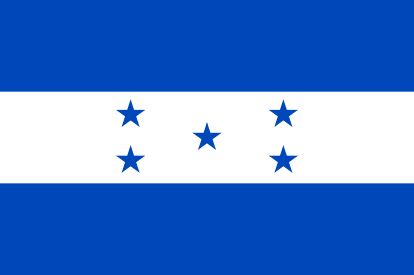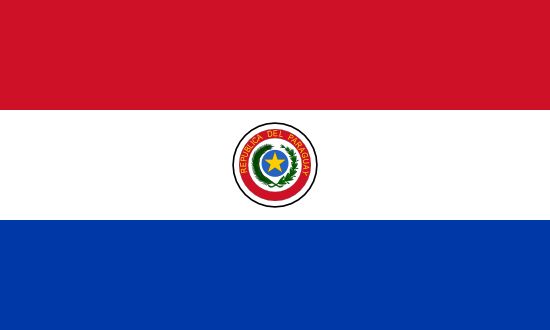

Canadian Crop Guides- Protecting Pollinators from Pesticides (1000234353)
Process Number PW-21-00973569
Dates:
2021-11-03 00:00:00
Amendment date:None
Date closing:2021/11/18 18:00 Eastern Daylight Time (EDT)
Details:
National Capital Region
Health Canada
Health Canada
Canada
Limited
PW-21-00973569
1000234353
Description:
Advance Contract Award Notice (ACAN) Title: Canadian Crop Guides- Protecting Pollinators from Pesticides Solicitation Number: 1000234353 1. The Purpose and Explanation of an ACAN An Advance Contract Award Notice (ACAN) allows Health Canada to post a notice for no less than fifteen (15) calendar days, indicating to the supplier community that a goods, services or construction contract will be awarded to a pre-identified contractor. If no other supplier submits, on or before the closing date, a Statement of Capabilities that meets the minimum requirements identified in the ACAN, the Contracting Authority may then proceed to award a contract to the pre-identified contractor. 2. Rights of Suppliers Suppliers who consider themselves fully qualified and available to provide the services or goods described in this ACAN may submit a Statement of Capabilities demonstrating how they meet the advertised requirement. This Statement of Capabilities must be provided via e-mail only to the contact person identified in Section 12 of the Notice on or before the closing date and time of the Notice. If the Bidder can clearly demonstrate they possess the required capabilities, the requirement will be opened to electronic or traditional bidding processes. 3. Proposed Contractor Pollinator Partnership of Canada 40 Lauder Ave. Toronto ON M6H 3E3 4. Definition of Requirements or Expected Results Pollinating insects, particularly managed honey bees (Apis mellifera) and non-Apis wild and managed bees, provide pollination services to about 70% of crop types globally. Honey bee health problems and declines in some native bees are thought to be due, in part, to exposure to crop pesticides and loss of habitat in agricultural landscapes. In order to reduce risk and maintain robust wild and managed bee populations for Canadian agricultural production, pollinator risk reduction guidelines and ways to support pollinators for growers, crop advisors, and beekeepers are essential. In 2020, Pollinator Partnership Canada (P2C) created the guide ‘Protecting Pollinators from Pesticides: Highbush Blueberry’ for growers and stakeholders outlining practices to reduce bee poisoning by agricultural pesticides and ways to support pollinator populations in Canada. The guide consists of two components: Protecting pollinators from pesticides - HIGHBUSH BLUEBERRY and the SUPPLEMENT to Protecting pollinators from pesticides - HIGHBUSH BLUEBERRY (https://pollinatorpartnership.ca/en/ag-guides). The guide is professionally formatted and designed to be a visually appealing overview of risk identification and methods for risk reduction, and includes a pesticide precaution level explanation and a comprehensive list of approved active ingredients for use on highbush blueberry in Canada and corresponding pollinator precaution levels. To better protect both managed and wild bees in crop environments in Canada, a series of crop-specific Canadian guides will be developed. These guides will be similar to and utilize the completed Highbush Blueberry guide as a template for additional crops. The additional crop guides will have some of the same elements, topics, content, style, flow, and graphics as the Highbush Blueberry guide, while having crop-specific information including but not limited to: production in Canada, pollinator benefits to production, pollinator attractiveness, use of managed pollinators, wild pollinator consideration, agronomic considerations, and a crop-specific list of registered pesticides with restriction levels. The supplier will develop, publish, promote and distribute these guides, in collaboration with their network partners. The guides will be published and distributed for use by growers, beekeepers, and other relevant stakeholders. These pollinator protection guides will be an important tool for communication with growers, beekeepers, and other stakeholders on best practices for pollinator protection on a crop specific basis, including but not limited to protection of bees from pesticides registered for use in Canada. The guides will be published electronically in English and French as part of a cohesive set of professionally formatted documents. Initial Contract Period (Contract award – March 31, 2022) Two guides will be developed for the Canadian crops of cucurbits and apple. Both are major crops in Canada that use managed pollinators and benefit from pollination services of both managed and wild pollinators. There is concern over exposure of pollinators to pesticides in both crops. Information in each guide will be researched and collated using (but not limited to) published literature, technical guides, online information, and stakeholder interviews. Each guide will contain the following sections: Foreword SECTION 1: Crop and Canadian specific pollination requirements and considerations, crop pollinators SECTION 2: Practices to Protect Pollinators from Pesticides with crop-specific information on four practices of integrated pest management, maintaining clear communications, supporting pollinators through habitat, and using pesticide products SECTION 3: Action Guides with short, bullet point information for growers and pesticide applicators, and beekeepers Resources including provincial and federal links, information on recognizing and reporting bee poisoning, and other useful crop-specific links. References Additionally, each guide will have a companion, supplemental document that will contain: Information on understanding pesticide toxicity, exposure, risk, and precaution levels, PMRA risk characterization for pollinators. Three tables: Pesticide products and their active ingredients, Active ingredient pollinator precaution levels, and Pollinator precaution levels. Each crop guide will professionally formatted, full colour, and approximately 40-45 pages (supplement will be approximately 20-25 pages). Each guide (both components - the main and supplement guide) will be in English and translated into French. The Supplier will develop, publish, promote and distribute these guides, through their networks, website and partners. The guides will be published, promoted and distributed for use by growers, beekeepers, and other relevant stakeholders. These pollinator protection guides will be an important tool for communication with growers, beekeepers, and other stakeholders on best practices for pollinator protection on a crop specific basis, including but not limited to protection of bees from pesticides registered for use in Canada. Option Periods 1, 2, 3, and 4 (April 1 2022 – March 31 2023; April 1 2023 – March 31 2024; April 1 2024 – March 31 2025; April 1 2025 – March 31 2026; ) Additional guides in the series “Canadian Crop Guides for Protecting pollinators from pesticides” will be developed for Canadian crops of interest. Each guide will be similar to the previous guides in the series, will include the following: Information in each guide will be researched and collated using (but not limited to) published literature, technical guides, online information, and stakeholder interviews. Each guide will contain the following sections: Foreword SECTION 1: Crop and Canadian specific pollination requirements and considerations, crop pollinators SECTION 2: Practices to Protect Pollinators from Pesticides with crop-specific information on four practices of integrated pest management, maintaining clear communications, supporting pollinators through habitat, and using pesticide products SECTION 3: Action Guides with short, bullet point information for growers and pesticide applicators, and beekeepers Resources including provincial and federal links, information on recognizing and reporting bee poisoning, and other useful crop-specific links. References Additionally, each guide will have a companion, supplemental document that will contain: Information on understanding pesticide toxicity, exposure, risk, and precaution levels, PMRA risk characterization for pollinators. Three tables: Pesticide products and their active ingredients, Active ingredient pollinator precaution levels, and Pollinator precaution levels. Each crop guide will professionally formatted, full colour, and approximately 40-45 pages (supplement will be approximately 20-25 pages). Each guide (both components- the main and supplement guide) will be in English and translated into French. The Supplier will develop, publish, promote and distribute these guides, through their networks, website and partners. The guides will be published, promoted and distributed for use by growers, beekeepers, and other relevant stakeholders. These pollinator protection guides will be an important tool for communication with growers, beekeepers, and other stakeholders on best practices for pollinator protection on a crop specific basis, including but not limited to protection of bees from pesticides registered for use in Canada. 5. Minimum Requirements Any interested supplier must demonstrate by way of a Statement of Capabilities that it meets the following minimum requirements: The supplier must have extensive expertise in pollinator research and conservation. They must be a leader in research and collaboration that has resulted in the generation of conservation and management tools, policy support, and new pollinator conservation knowledge. The supplier must be capable of successfully promoting and distributing the guides to growers, beekeepers, and stakeholders through an extensive network of research, conservation and outreach partners and contacts. The supplier must be able to complete documents in English and French. The supplier must be able to electronically publish the guides as part of a series of cohesive set of professionally formatted documents. The supplier must be capable of generating crop specific guides (each of which consists of two components), similar to the highbush blueberry guide (Protecting pollinators from pesticides - HIGHBUSH BLUEBERRY and the SUPPLEMENT to Protecting pollinators from pesticides - HIGHBUSH BLUEBERRY (https://pollinatorpartnership.ca/en/ag-guides). The guides should include the following: Information in each guide will be researched and collated using (but not limited to) published literature, technical guides, online information, and stakeholder interviews. Each guide will contain the following sections: Foreword SECTION 1: Crop and Canadian specific pollination requirements and considerations, crop pollinators SECTION 2: Practices to Protect Pollinators from Pesticides with crop-specific information on four practices of integrated pest management, maintaining clear communications, supporting pollinators through habitat, and using pesticide products SECTION 3: Action Guides with short, bullet point information for growers and pesticide applicators, and beekeepers Resources including provincial and federal links, information on recognizing and reporting bee poisoning, and other useful crop-specific links. References Additionally, each guide will have a companion, supplemental document that will contain: Information on understanding pesticide toxicity, exposure, risk, and precaution levels, PMRA risk characterization for pollinators. Three tables: Pesticide products and their active ingredients, Active ingredient pollinator precaution levels, and Pollinator precaution levels. Each crop guide will professionally formatted, full colour, and approximately 40-45 pages (supplement will be approximately 20-25 pages). Each guide (both components- the main and supplement guide) will be in English and translated into French. 6. Reason for Non-Competitive Award Section 6 of the Government Contracts Regulations contains four exceptions that permit the contracting authority to set aside the requirement to solicit bids. For the proposed procurement, the following exception applies: (d) Only One Person or Firm is capable of performing the contract. Pollinator Partnership of Canada is the only known firm that meets all the minimum requirements. They have a wide network of relevant contacts and collaborators in areas of pollinators and agriculture. There are no known firms in Canada that have the relevant knowledge, experience, and collaborative capabilities as Pollinator Partnership of Canada that could complete this contract efficiently. 7. Applicable trade Agreements and Justification for Limited Tendering or the Procurement Strategy for Aboriginal Business Not applicable 8. Ownership of Intellectual Property Ownership of any Foreground Intellectual Property arising out of the proposed contract will vest in the Contractor. 9. Period of the Proposed Contract The contract period shall be from date of contract award until March 31, 2022 inclusive, with 4 irrevocable one-year option periods. 10. Estimated Value of the Proposed Contract The total estimated value of the proposed contract should not exceed $39,525, including travel and living expenses (if applicable), and all applicable taxes. Each option Period will have a value that shall not exceed $40,000, making the total value $199,525. Including travel and living expenses (if applicable), and all applicable taxes 11. Closing Date and Time The Closing Date and Time for accepting Statements of Capabilities is November 18, 2021 at 17:00 EST 12. Contact Person All enquiries must be addressed by e-mail to: Name: Thomas Hyde E-Mail: Thomas.Hyde@hc-sc.gc.ca
Contact information:
Jones, Cathy
Contact email:Cathy.Jones@hc-sc.gc.ca
Contact phone:613-298-8295
200 Eglantine Driveway Ottawa ON K1A 0K9 CA
Contact Fax:Solicitation Documents:
| File | Amendment Number | Language | Date added |
|---|












